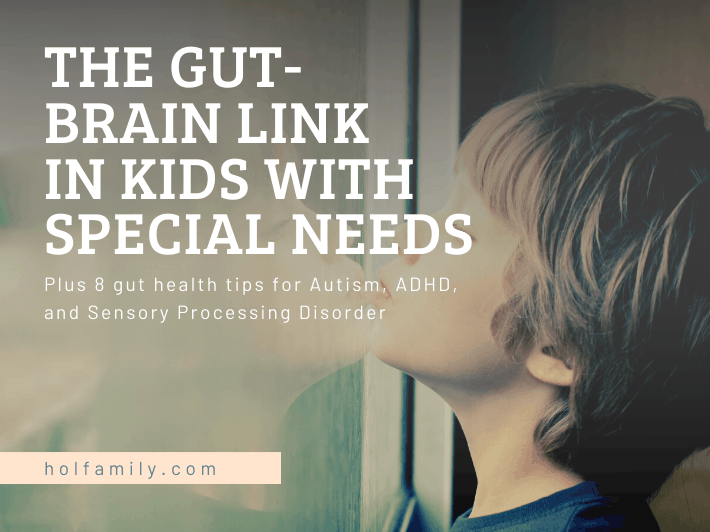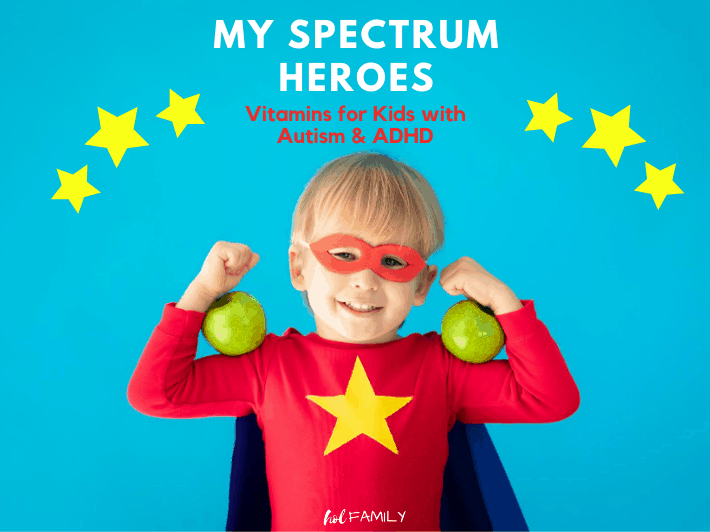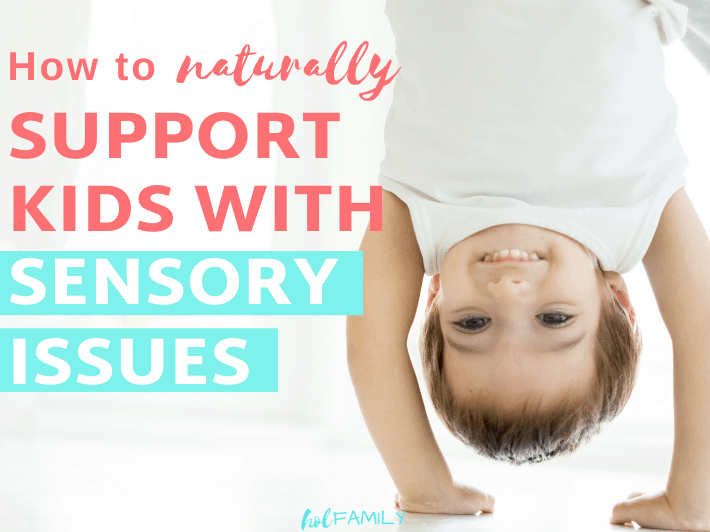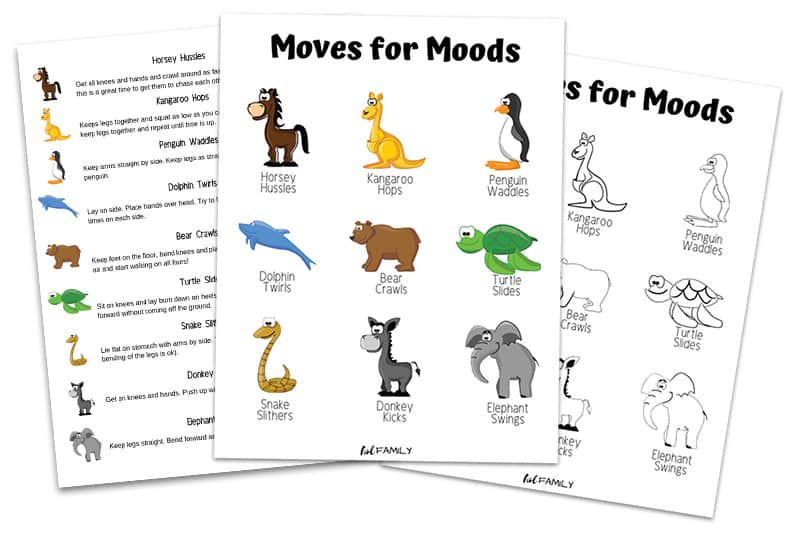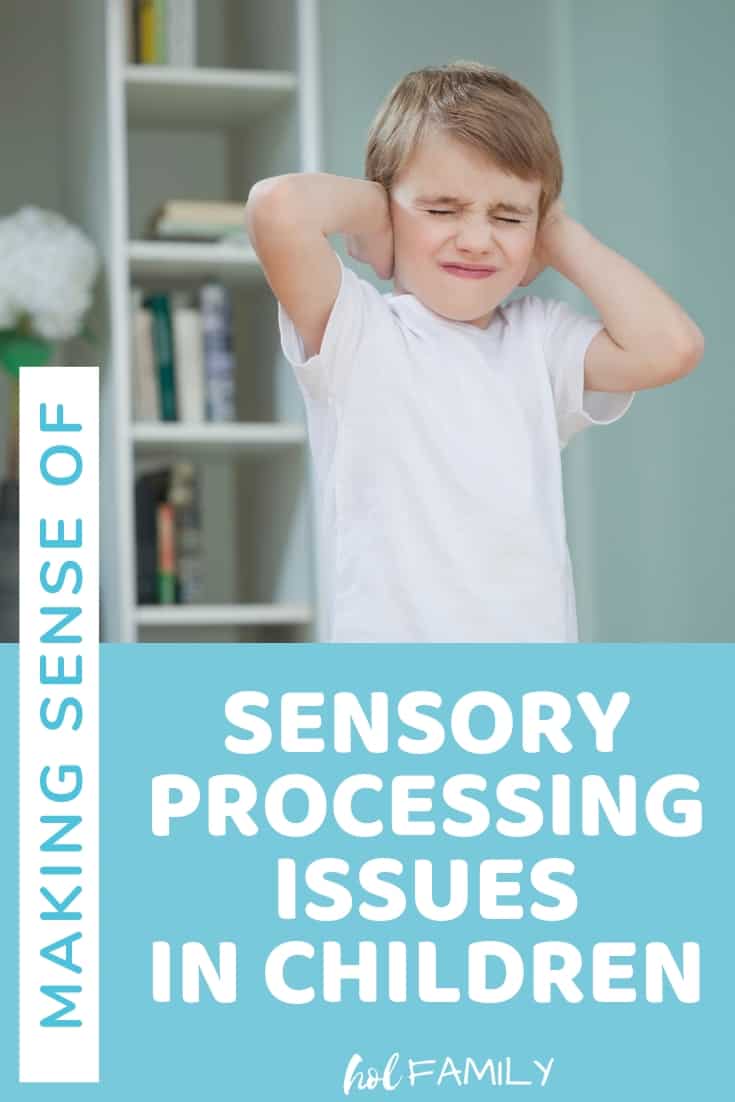
I’ll never forget the time when we tried to serve our kids Pad Thai made with shirataki (low carb tofu noodles) instead of rice noodles. I figured that since Pad Thai was their favorite meal, a tiny swap wouldn’t be such a big deal.
Boy was I wrong.
Our daughter was only two and a half at the time, and instantly took a big bite of her meal. The next things we knew, she was gagging on her dinner and one of the noodles had shot out of her nose.
Our oldest son (who has Autism and already struggles with sensory issues) took one look at her little sister and declared, “I’m definitely not eating this dinner now.”
To this day, our children will still not even entertain the idea of shirataki noodles.
Most of us struggle with sensory issues to some degree. Maybe you get anxious in crowded places, hate the feel of tags in your clothing, or can’t stand the texture of clumpy foods like oatmeal and mashed potatoes.
The difference between these mild sensory quirks and sensory processing issues comes down to their impact on everyday life.
While mild sensory quirks like those above can be somewhat annoying, they are manageable and don’t really cause any major problems.
Sensory processing issues like those seen in Sensory Processing Disorder, Autism, and ADHD are considered more chronic and severe, impacting multiple areas of daily living.
Let’s dive a little deeper into what sensory processing issues are, who struggles with sensory processing, the 7 sensory domains, and ways to help children with sensory processing issues.
Understanding Sensory Processing Issues
Sensory processing is the way the brain receives, organizes, and responds to all of the information coming in through the various senses.
Sensory processing issues happen when there is a problem in one of these three steps. As a result, those with sensory processing issues are either overly sensitive to sensory input, under sensitive, or a combination of both.
Because we depend on our senses to function literally 24 hours a day, sensory processing issues can have a major impact on children in every area including learning, development, and most aspects of daily life.
Children who are overly sensitive to sensory input will tend to avoid their triggers, and may be labeled as stubborn, lazy, or uncooperative, or shy by those who don’t understand sensory processing.
Children who are under sensitive to sensory input will be sensory seekers, constantly drawn towards touching things, tasting things, engaging in risky behaviors, being a little too aggressive with physical touch, and seemingly on constant hyper-drive.
Some children may display elements of being both over and under sensitive depending on the circumstances or sensory domain.
A Day in the Life of Sensory Struggles

The day in the life of a child with sensory processing issues can be extremely challenging since our senses are involved in so many activities of daily living.
From the moment they wake up, basic things like getting dressed and brushing hair/teeth can be a major challenge.
A child with sensory issues likely demands to wear the same outfit day after day because it is the only thing they feel comfortable in.
They may gag on their toothbrush or experience pain when you try to brush their hair.
Mealtimes can be a major battle because children with sensory issues tend to be picky eaters, prone to feeding difficulties over textures, temperature, smell, and even the way food looks on their plate.
Getting to school may be a daily struggle thanks to major social fears and anxiety, OR these kids may be labeled as “trouble makers” at school because they play a littler too rough and struggle with sitting still in class.
They may come home after school and immediately have a huge sensory meltdown because they’ve been holding so much in all day.
These are children who may have strong aversions to smell, shy away from playing with sand, playdough, or slime, and are overly sensitive to bright lights and sounds.
Some of the early warning signs in infancy are colic or crying for no apparent reason, heightened sensitivity to pain, difficulty sleeping, feeding issues, food sensitivities and allergies, developmental delays, and a strong preference for either wanting to be held or carried all the time or disliking being rocked and cuddled.
Who Struggles with Sensory Processing

The majority of children with mental or physical disabilities also have abnormal responses to sensory input.
Sensory processing issues are often present in children with Sensory Processing Disorder, Autism, ADHD, and many other developmental disorders.
Most sensory processing issues also tend to go hand in hand with regulatory and behavior problems, including sleeping, eating, and elimination.
Some professional therapists believe that many symptoms of autism and ADHD stem from disordered sensory processing in the brain. They believe that by regulating sensory processing, many of the symptoms of ASD and Autism and can be improved.
Sensory processing issues can affect individuals at any age, although by adulthood many of those who have struggled since early childhood have learned how to cope with many of their sensory struggles either through avoidance or learned regulatory skills.
The Seven Sensory Domains (including the lesser known 6th and 7th senses)

Before we can talk about the best ways to help kids with regulating their sensory responses, it is important to understand what the 7 sensory domains are and how they impact sensory processing.
Tactile (touch): The tactile system processes touch information from the body. Touch sensations are sent to a part of the brain called the somatosensory cortex, which is a part of the nervous system responsible for touch, temperature, pressure, and pain.
Sensory struggles related to the tactile domain may include hypersensitivities to any touch (like being hugged), temperature changes (always cold or hot), abnormal pain response, or being overly aggressive in physical touch.
Oral motor (gustatory, taste): The main area of the brain responsible for the gustatory domain is located between the temporal and frontal lobes. This system is very important because it allows us to differentiate between safe foods and harmful foods.
Sensory struggles with taste often show up as picky eating with extreme food aversions or food preferences for things that are sour, salty, spicy, etc. It can also manifest in children who constantly need to be chewing things, always put objects in their mouth, or have a strong gag reflex.
Visual (sight): The occipital lobe is the area of the brain that is responsible for vision. Everything from color, shape, motion, and even orientation are received here from the retina.
Sensory struggles related to the visual system can be harder to detect, but may include light sensitivities, constantly seeking visual stimulation (electronics, bright or moving objects), or difficulty making eye contact.
Auditory (sound): The superior temporal gyrus is the part of the brain that houses the primary auditory complex. Various sound frequencies and amplitude are received and processed here.
One of the most common sensory struggles with the auditory system is an over-sensitivity to loud noises.
Olfactory (smell): The olfactory bulb is located in the most forward, bottom area of the brain. While our primary olfactory input comes from receptors in the nose, research has now discovered that we also have additional olfactory receptors located in other areas of the body like the lungs, intestines, skin, heart, and blood.
Sensory struggles related to the olfactory system usually involve extreme reactions to smell. Some people are very turned off by certain smells to the point of gagging, and others are very drawn to odd smells (gas, smoke, skunks).
Proprioception (self-movement, body position, body awareness): The proprioceptive system is one of the two lesser-known 6thand 7thsenses, along with the vestibular system.
The proprioceptive system is responsible for sensing the location, orientation, movement, and position of our muscles and joints. This information allows us to determine the position of various body parts as well as the amount of effort required to move them.
Sensory issues related to the proprioceptive system can make us more clumsy, unaware of our own strength, or lead us to avoid certain activities like swinging or sports.
Vestibular (movement, balance, spatial orientation): The vestibular system is our primary source of information about movement and the position of our bodies in relation to gravity. This is also the system that helps to keep us stable and upright.
Sensory struggles in the vestibular system make activities that require balance and coordination more difficult, such as riding a bike or gymnastics. Without knowing where the body is in space, many daily activities like eating and getting dressed can become more difficult.
How to Help Children with Sensory Processing Issues

Back in 1972, an occupational therapist by the name of Jean Ayres came up with the term “sensory integration.” She believed in the importance of sensory input and motor activity during early childhood in order help children learn how to move their bodies in space, about object permanence, and how to combine objects together.
She actually believed that this “sensorimotor intelligence” might be a prerequisite for higher cognitive functions, such as language development.
Sensory integration therapy involves using sensory activities to target the underlying neurological dysfunction rather than focusing just on the individual symptoms.
Performing sensory activities can have a positive impact on sensory processing as well as attention and learning.
Sensory activities benefit those with learning disabilities by enhancing the brain’s ability to learn instead of simply focusing attention on lagging skills.
With time, the brain develops the ability to properly perceive, pay attention, remember, and act out motor tasks, and there is improvement in all other academic and non-academic tasks.
Another bonus of sensory integration therapy is that it allows children who struggle with socialization to become more connected with others, likely because additional sensory input temporarily puts the mirror neurons and “theory-of-mind” skills back in tune.
Jean Ayres also came up with the idea of a sensory diet, which she explained as a level of stimulation that is “just right” for each individual child.
Sensory activities can be calming, or alerting depending on what the child needs.
Some of the key benefits of a sensory diet include learning, focus, behavior, and emotional regulation.
A sensory diet can be created by a professional like an occupational therapist, or by parents as part of therapy at home.
To learn more about what a sensory diet is and how to incorporate sensory activities into your child’s daily schedule, click here to read this post on “How to Create A Sensory Diet for Kids.”
Do you have a child who struggles with sensory processing issues? What activities have you found helpful? Leave us a comment below and let us know!

